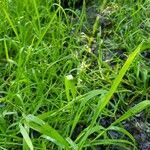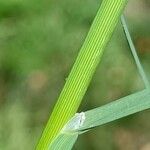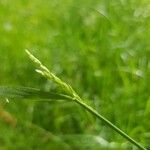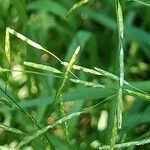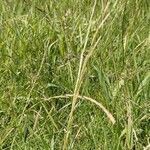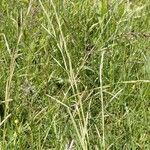Loosely tufted perennial, often rooting from nodes and freely branching when growing in water. Culms ascending to erect, to 100 cm high. Leaves: sheaths variably cross-veined; ligule 3–15 mm long, obtuse to acute, soon shredding; blade 5–50 cm long, 2–10 mm wide, variably cross-veined, adaxially smooth. Inflorescences panicles, slender, interrupted, c. 10–50 cm long. Spikelets narrowly oblong, 14–35 mm long, with 8–16 bisexual florets; rachilla glabrous. Glumes obtuse: lower glume ±elliptic, 2–3.5 mm long, 1-nerved; upper glume ±ovate, 3–4 (–5) mm long, 1–3-nerved. Lemma ovate, 5.5–7 mm long, acute to narrowly obtuse, entire, dorsally rounded, smooth and glabrous. Palea equal to or shortly exceeding lemma, sharply bifid, glabrous. Anthers 1.5–2 mm long. Caryopsis dorsiventrally compressed, longitudinally grooved.
Differing from no. 2 [Glyceria septentrionalis Hitchc.] essentially only in dimensions; lemmas 5.4–7 mm; rachilla-joints 1.9–2.5 mm; palea very rarely exceeding the lemma; anthers 2–3 mm; 2n=40. Nf., N.B., N.S., and e. Que., where possibly native; intr. at New York City; Europe.
An erect grass. It has rhizomes and keeps growing from year to year. It has stems that creep underwater. The flowering stems are upright.
